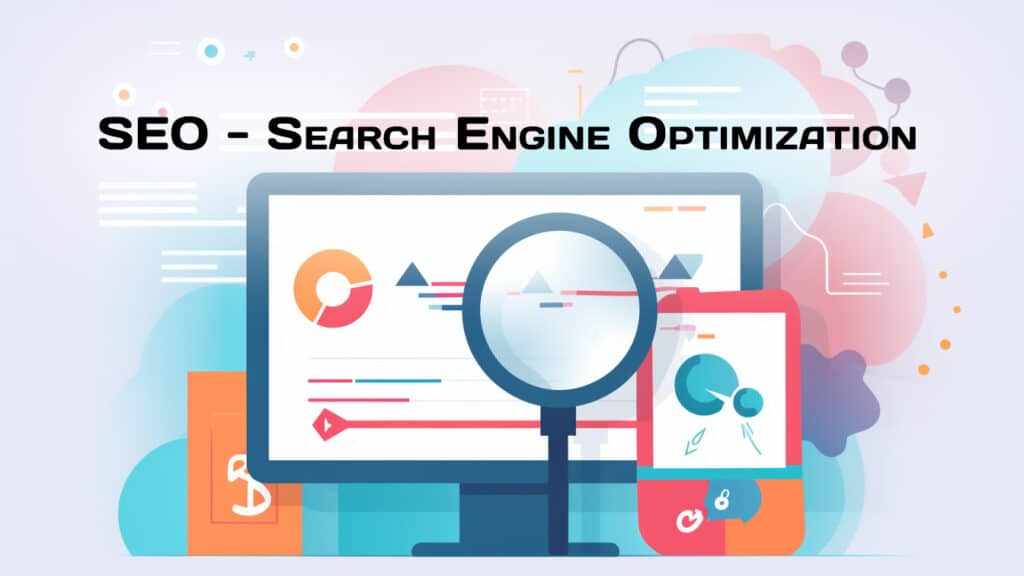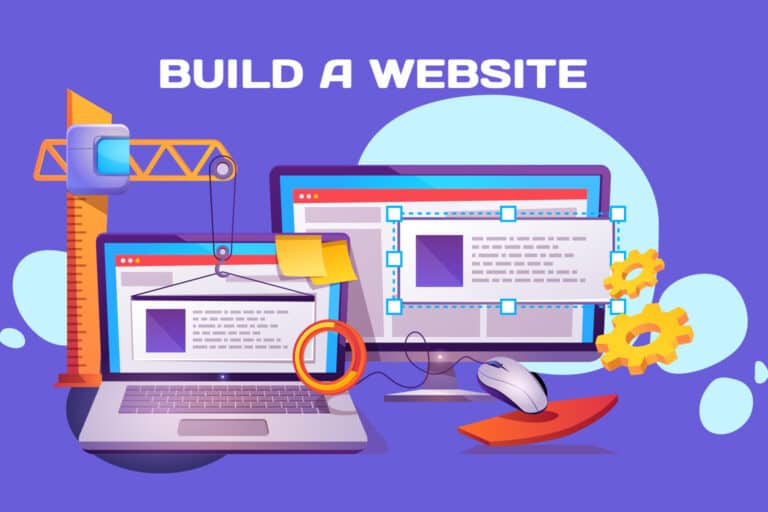Do you dream of owning your own small business website? Are you wondering how to create a website for it? Building a successful web presence can be an intimidating process. But don’t let that stop you! In this article, we will show you how to take your small business website from zero to hero in 10 easy steps.
Having a strong online presence is essential in today’s digital world, and having the right tools can make all the difference. With our step-by-step guide, even those with limited technical knowledge can get up and running quickly—and have fun doing it too! You’ll learn about choosing the best platform for your needs, designing an attractive layout, creating content that speaks to your audience, and much more.
By taking the time to build a solid foundation for your business website, you’ll join millions of other entrepreneurs who are making their dreams come true every day. So what are you waiting for? Let’s get started on building a small business website!
1. Define The Purpose Of Your Website
Building a website for your small business is an exciting prospect. It’s the perfect way to make sure potential customers know who you are and what you can do for them. But it may feel overwhelming when you don’t know where to start. Before you begin, take some time to define the purpose of your website so that everything else falls into place.
The first step in making a great website is deciding why you need one in the first place. Is it solely to provide information about products or services? Do you want people to be able to buy from your website? Are there any other objectives, such as building relationships with customers? Knowing exactly why you’re creating this site will shape how it looks and functions later on.
It’s also important to understand who your target audience is before beginning the process of going live. Think carefully about their needs, interests, values, and wants – all of which should influence design decisions throughout the project. This includes using language they would use when talking about your brand and understanding their expectations concerning customer service.
Once these two steps have been completed, you’ll have a clear idea regarding how best to create a small business website tailored specifically to those needs without compromising on aesthetics or usability. Ready? Let’s move on to choosing a domain name that reflects your brand!
2. Choose A Domain Name That Reflects Your Brand
Choosing a domain name for your website is an important step in creating the perfect online presence for your small business. It’s essential to pick something that reflects your brand, as it will be displayed prominently on every page of your site and seen by potential customers.
When deciding what to call yourself digitally, think about how people might search for you and make sure it’s easy to remember and spell. It should also be unique enough that no one else has already taken it – don’t forget to check different extensions such as .co or .net if they are available. A good way to come up with ideas is to brainstorm words related to what you do, then combine them into something memorable yet simple.

Once you’ve selected a great domain name, it’s time to find a hosting provider who can help get your website live quickly and efficiently. You’ll want someone who offers secure servers, scalability options so you can grow with ease (just in case! ), and excellent tech support when things go wrong or you need advice. So let’s move on to finding the best hosting option for your small business website!
3. Purchase Secure, Scalable Website Hosting With Good Tech Support
Now that you have a domain name, it’s time to find the right hosting provider for your small business website. Finding secure and scalable web hosting is essential for any online presence. You’ll want security features like SSL encryption, and scalability options so you can grow with ease, plus excellent tech support when things go wrong or advice is needed.
But what if building the actual website isn’t something you feel confident doing? In this case, look out for web hosts offering tools such as website builders specifically designed for small businesses. These often come pre-installed with templates and themes, allowing you to easily create a professional-looking site without needing technical know-how for e-commerce – perfect for those starting out! They also provide the ability to add plugins like contact forms and e-commerce stores, so you can get everything up and running quickly.
So now that we’ve taken care of finding good quality hosting with an efficient website builder tool, let’s move on to designing and building our pages including key information and calls-to-action.
4. Design And Build Your Website Pages, Including Key Information And Call-To-Action
Having secured our hosting and website-building platform, it’s time to start designing the pages on our website. This is where we can really bring out the personality of our business and create an immersive experience for visitors.
First, let’s take a look at what key information should be included:
- A well-crafted About page to introduce ourselves and give potential customers insight into who we are;
- Clear contact details so that customers know how to get in touch with us;
- Calls-to-action (CTAs) throughout the site to encourage engagement such as signing up for newsletters or buying products/services.
We also need content that resonates with our target audience – think interesting blog posts, helpful guides, engaging visuals, and interactive media. Writing unique compelling copy becomes vital here too – this will help draw people in and keep them engaged while they explore further. Finally, remember to use keywords related to your small business throughout your copy – not only does this ensure you show up in search engine results but it speaks directly to those looking for relevant services or products like yours.
Now that we’ve taken care of design fundamentals and crafted captivating content tailored towards our target audience, let’s move on to choosing the best content management system (CMS) and eCommerce platform (if needed).

5. Choose The Best Content Management System And E-Commerce Platform (If Needed)
When it comes to choosing the right Content Management System (CMS) and eCommerce Platform, there are several things to consider:
- Ease of use – what level of technical knowledge do you have? Are you comfortable with coding or would a website builder for small businesses be best suited?
- Cost – depending on your budget some platforms may be too expensive. Research different software packages and make sure they fit within your budget.
- Features – is the platform intuitive enough that anyone can use it, or does it require training? Does it offer features such as analytics and reporting tools so you can track how customers interact with your site?
- Security – check whether the CMS has any security certifications in place and if updates need to be installed manually or automatically.
- Mobility – does the CMS provide an app for mobile devices so visitors can access information quickly from their phones and tablets?
Weigh up these factors when selecting which website creator for small businesses will take our web presence to the next level. The plethora of options available means there are no one-size-fits-all solutions; instead, look at reviews from existing users, compare demos online, and test out free trials until you find the best website creator for small businesses that meets all your needs. With this foundation established, we’re now ready to create an interesting, memorable, and engaging website user interface – let’s get started!
6. Create An Interesting, Memorable, And Engaging Website User Interface
Choosing the right CMS and eCommerce platform is only the first step in creating a successful website for your small business. Now, it’s time to design an interesting, memorable, and engaging user interface (UI). A great UI should be visually appealing, easy to navigate, and create a seamless experience for visitors. Here are some tips on how to make an online business website that stands out:
- Keep it simple – avoid cluttering the page with too much text or images as this can overwhelm users. Stick to a clean layout with intuitive navigation so visitors can quickly find what they’re looking for.
- Use visuals – add photos, videos, and other forms of visual content to help break up blocks of text and keep users engaged. High-quality stock photography can also make your site look more professional.
- Incorporate animations – subtle animations such as hover effects can add interest without distracting from the main message. Animations are also useful for drawing attention to key points or directing users where you want them to go next.
By following these tips when building your business website, you’ll have created an enjoyable browsing experience that will keep customers returning time after time! Now let’s move on to testing and launching our website, ensuring it’s user-friendly and accessible on multiple devices…
7. Test And Launch Your Website, Ensuring It’s User-Friendly And Accessible On Multiple Devices
Now that the design and visuals of your website are complete, it’s time to test and launch. A few simple steps can ensure your business website is user-friendly and accessible on multiple devices. According to recent research, over 80% of internet users now access websites from their smartphones or tablets – so making sure our site looks great no matter what device a visitor is using is essential for success.
To start with, you’ll want to run various tests such as page loading speed, browser compatibility, and mobile responsiveness. Testing each individual page in different browsers will also ensure visitors don’t experience any unexpected issues when accessing your site. Additionally, setting up analytics tools such as Google Analytics allows you to track visits and analyze how people interact with your pages. This data can help you identify opportunities for improvement.
Once everything has been tested and approved, it’s time to go live! Publishing your website online marks the beginning of an ongoing process of optimization; monitoring performance metrics regularly helps keep things running smoothly while allowing you to stay ahead of trends in the industry. With these steps completed correctly, you’re ready to start engaging with customers through social media marketing – let’s take a look at how we do this next…
8. Develop A Social Media Marketing Plan To Promote Your Website And Engage With Your Audience
With your website now live, it’s time to focus on engaging with customers and driving traffic. Developing a solid social media marketing plan is key to promoting your business online. By creating content tailored specifically for each platform – such as videos, images, or blog posts – you can build relationships with prospective clients while reinforcing brand identity across different channels.
Creating unique content that resonates with your target audience allows you to establish yourself as an industry leader in the eyes of potential customers. Additionally, by regularly monitoring conversations around topics related to your field, you’ll be able to engage directly with these users and convert them into leads through targeted promotions or offers.

Finally, take advantage of all available tools when creating campaigns; from Twitter cards and Facebook Ads Manager to more sophisticated methods like A/B testing and remarketing campaigns – there are plenty of ways you can make sure your message reaches the right people at the right time. With a well-crafted social media strategy in place, it’s time to optimize our website for search engines (SEO) so we can increase visibility and drive even more organic traffic…
9. Optimize Your Website For Search Engines (SEO) To Increase Visibility And Drive Traffic
Now that you have a fully-fledged website and a comprehensive social media strategy in place, it’s time to turn our attention to optimizing your site for search engines. SEO is an invaluable tool for small business website owners looking to increase visibility online, as well as drive more organic traffic to their websites.
The key components of successful SEO are twofold: onsite optimization and offsite optimization. Onsite optimization involves tweaking aspects of the website itself – such as meta descriptions, alt tags, URL structure, etc. – so that they appear more prominently in search engine results pages (SERPs). Offsite optimization includes doing things like link building, guest blogging, and other activities outside the boundaries of your own website which will help boost its overall ranking within SERPs.

By understanding how best to optimize both onsite and offsite elements related to your website’s content, you can ensure it has the greatest chance of appearing at the top of relevant searches – making sure potential customers don’t miss out on what you have to offer. However, just creating a great website isn’t enough; remember that all sites need regular maintenance and updating if they’re going to keep up with industry trends and remain effective…
10. Regularly Maintain And Update Your Website To Keep It Current And Effective
Maintaining and updating your website regularly is essential for any business. That’s because technology changes quickly, search engine algorithms are constantly being tweaked, and customer expectations continue to evolve. As such, it’s important to stay up-to-date with the latest trends in web design so that you don’t become outdated or irrelevant.
Updating your site regularly also ensures it remains secure from malicious attacks and hackers. Make sure to back up all data associated with your website as well, just in case something goes wrong. And if you’re not running an e-commerce store, consider setting up an SSL certificate – this will help boost trust between customers and your business by providing encryption of sensitive personal information when they fill out forms or make purchases online.
Having a good handle on how to build and maintain a website is paramount for anyone looking to start their own web design business from home; there’s plenty of potential profit to be made here! Just remember: keep learning about the industry so you can ensure every aspect of creating and managing websites meet current standards – from SEO strategies to coding best practices – and you’ll have no problem succeeding in this ever-changing digital landscape.
Frequently Asked Questions
Setting up a website is a daunting task, especially when it comes to registering your site with search engines. You may be wondering how you can get started in ensuring that your business is visible on the web and whether or not you should use paid services for this purpose.
The good news is that there are steps you can take that won’t cost you anything at all! Before paying for any service, make sure to do some research about the best way to go about getting your website registered with popular search engines.
You will likely find many resources available online that provide detailed instructions on submitting your website to various search engines such as Google, Bing, Yahoo!, Ask Jeeves, AOL Search, and more. It’s important to note that although these services are free of charge, they may require regular updates in order for them to keep working properly. Additionally, each engine has its own algorithm which allows it to rank websites according to certain criteria so it’s wise to familiarize yourself with their guidelines before submitting your site.
By doing some preliminary research and following the suggested guidelines from different search engines, you’ll soon be well on your way toward having a successful website presence without breaking the bank!
It’s a nightmare scenario for any small business: your website is hacked and you can’t get it back online. Unfortunately, this is an increasingly common occurrence in the digital age, so understanding how to protect your website from malicious hackers should be at the top of your priority list when building your site.
The best way to safeguard against potential hacks is through regular security audits and maintenance checks. This means making sure all plugins are up-to-date, monitoring user accounts regularly, and running malware scans on a regular basis. You may also want to consider investing in additional security measures such as two-factor authentication or content delivery networks (CDNs) that can help reduce the risk of being hacked.
Finally, one often overlooked aspect of website security is choosing secure hosting services and ensuring you have backups available if something does go wrong. Your host provider should offer features like firewalls and anti-virus software which will add another layer of protection against hackers trying to access your data. Keeping these steps in mind will ensure that your website remains safe and secure – giving you peace of mind knowing that it isn’t vulnerable to attack.
With the ever-changing landscape of technology, it’s important to stay on top of industry standards when creating a small business website. That includes making sure that all content is ADA-compliant so everyone can access and engage with it. So, how do you make sure your website is accessible?
ADA compliance means that people with disabilities are able to use and interact with websites just as easily as someone without a disability. This could include anything from providing an audio description of visuals or allowing visitors to adjust the font size and color contrast settings. These features allow those with physical limitations or impairments to browse just like anyone else would.
When designing your site, there are certain elements you should consider in order to ensure accessibility for all users. Make sure interactive controls and navigation menus have labels that clearly explain their purpose using plain language. Also, keep images simple and provide alternative text descriptions so blind and low-vision users can understand what’s being shown on the page. Ultimately, following these guidelines will help create an inclusive experience where everyone feels welcome regardless of age or ability level.
By taking the time to think about every user who may visit your site, you’ll be creating a more enjoyable experience while also helping to foster trust between potential customers and your brand. Plus, since web accessibility legislation often varies by region – adhering to ADA standards puts you ahead of the game no matter where your business operates!
You’ve got your small business website up and running, but how do you make sure it can accept payments? Setting up a payment system for your website is an essential step if you want to start making money. But with so many options out there – from third-party services like PayPal to more sophisticated integrated solutions – it can be tricky to decide which one works best for your needs.
Fortunately, today’s e-commerce platforms are designed with the ability to easily integrate payment systems into existing websites. You’ll need to choose the service that fits both your budget and customer base while also providing security features such as PCI compliance and fraud protection. This will ensure that all transactions made on your site are safe and secure. Additionally, certain payment gateways may offer additional features or discounts based on things like transaction volume or the type of product being sold.
When deciding what service to use for accepting payments online, consider factors such as setup speed and cost structure. Having a reliable, easy-to-use payment gateway in place makes customers feel confident that their purchases will go through without any hiccups — meaning they’re more likely to keep coming back! All in all, setting up a payment system isn’t something you should take lightly; invest some time researching the different options before committing long-term.
Creating a website is like building a castle; it needs walls and security to protect it from outside threats. When designing your website, one of the most important steps is making sure that it’s secure from viruses and malware. While there are many measures you can take to ensure this, understanding the basics will give you peace of mind in knowing that your site is protected.
To start off with, make sure you have adequate hosting options for your website based on its size and complexity. A good host should provide regular backups, automatic updates, and threat protection against malicious attacks. Additionally, be sure to use strong passwords for any user accounts associated with the website – weak or stolen passwords could easily be exploited by hackers. It’s also important to remember that you need to constantly monitor who has access to your admin panel so that only authorized personnel can log in as administrators.
Finally, making use of an SSL certificate for data protection between both ends of communication (client-server) adds another layer of security for online transactions. This ensures that all sensitive information, such as credit card numbers, remains encrypted when being sent over the web, thus protecting them from potential cyber intruders. By taking these precautions, you can rest assured that your website will remain safe and secure while still providing customers with the seamless experience they expect from an e-commerce store.
Conclusion
Well, there you have it: the ten-step program to creating a fantastic small business website. You can go from zero to hero in no time at all! All that’s left to do is sit back and watch your ideas come to life on screen.
But don’t forget about some of the more mundane details that are essential for any successful website – like registering with search engines, implementing security measures, setting up payment systems, and making sure everything follows ADA guidelines. It may seem tedious now, but trust me; you’ll thank yourself later when your site runs smoothly as butter!
And if none of this makes sense? Don’t worry – just hire a professional web designer who knows what they’re doing! They can take care of all these nitty-gritty technicalities so you don’t have to. After all, isn’t that why we pay them the big bucks?!







